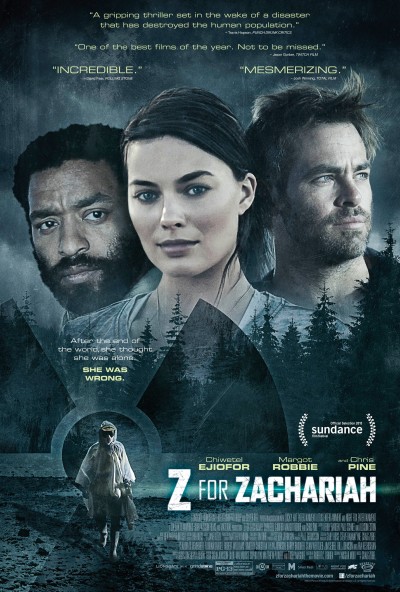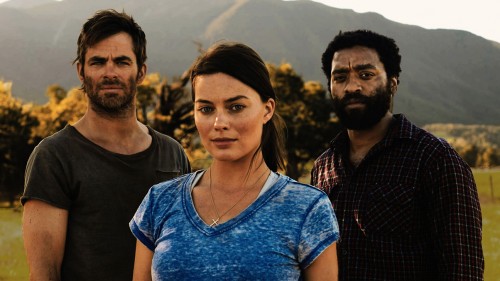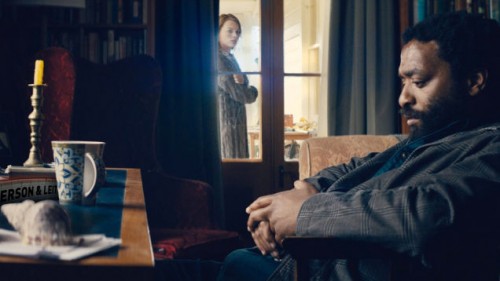[Rating: Minor Rock Fist Up]
What is most notable about the new post apocalypse film Z for Zachariah, opening August 28 in Kansas City, is the evocative mood conveyed by cinematographer Tim Orr. The seemingly spare story works out its themes of survival, love, and the spiritual beliefs of its two main characters against a beautifully filmed backdrop. Z for Zachariah‘s visual style is its strongest point, as the above mentioned themes, while compelling, are not nearly as understated as the images the filmmakers have crafted. Despite its hackneyed attempts at exploring the “Faith VS Science” conflict, as though the two have always been mutually exclusive, Z for Zachariah is a haunting film whose strength lies in its expression of the loneliness and vastness of a world depopulated of humans.
Ann Burden (Margot Robbie) has survived the nuclear annihilation of planet earth by living in an isolated valley whose self-contained ecosystem has somehow managed to keep out the radioactive fallout that has seeped into a nearby water supply, where she stumbles across Loomis (Chiwitel Ejiofor), a scientist, as he takes off his radiation suit to bathe in the poisoned water. Loomis helps Ann cultivate the land that she lived on with her father before the world ended. The film’s well-played tensions between Ann, who is white, and Loomis, who is black, are explored through notions of race, religious faith versus viewing the world through a scientific lens, and sexual tensions that arise between a man and woman who seem to be the only two people left on the planet.
One of the film’s central struggles has Ann and Loomis trying to find a way to produce electricity, but there is one problem: they need wood to build a waterwheel to produce power, and the only nearby place that has sturdy, milled wood is the tiny church that Ann’s father built when she was a child. Man-of-Science Loomis tries to convince religious country girl Ann to tear down the church so they can begin their project to produce electricity. The obvious conflicts between Ann and Loomis’ beliefs, as played out through Loomis’ insistence that they use the wood from the church to eventually generate electricity so they can freeze meat, unfold in a condescending way that places the scientifically-minded Loomis above spiritually-devout Ann. In an early scene, after Ann decides that she can trust Loomis and she allows him into her home, he browses all of the books on her paltry shelves: books about farming, books by Billy Graham, and religious children’s books. Despite her seemingly strong spiritual beliefs, it doesn’t take much for Loomis to convince Ann to tear down the church.
The movie’s facile attempt at presenting tensions between scientifically-leaning thoughts and devoutly religious beliefs amid the rebuilding of society are among the many uninteresting conflicts in the film. When a slightly radiated stranger named Caleb (Chris Pine) drifts onto the farm, Z for Zachariah concentrates on the potential love triangle between Ann, Loomis, and Caleb. Dramatic conflict flares slightly when Loomis observes the flirtations between Ann and Caleb, and when he seemingly gives Ann his blessing to sleep with Caleb, he says bitterly, “It’s okay, you’re both white.” Racial and gender tensions rise to the surface throughout the entire movie, but they are never fully explored.
The real star of Z for Zachariah is cinematographer Orr, who has shot numerous films and TV shows over the years, and who got his start shooting David Gordon Green’s dreamlike masterpiece George Washington. That film was replete with images that mixed neorealist tendencies with the kind of evocative Magic Hour cinematography often associated with Terrence Malick films, a director whose style still influences Orr’s work. Orr masterfully uses natural lighting to establish the film’s somber, quiet tone. Z for Zachariah’s cinematography counters the usually-dreary look of other relatively recent apocalypse films like The Road and The Book of Eli. In a post-apocalyptic film where electricity is nearly non-existent, Orr uses natural lighting to bring the planet back to a time when only the sun illuminated everything, giving the film a sense of realism in its rustic setting.
Z for Zachariah was directed by Craig Zobel, who made the terrible, nearly unwatchable Compliance, a small-scale psychodrama about a fast food employee who is tortured over the phone by an unseen perpetrator. That film showed Zobel’s talent for building dramatic tension with a small number of characters. Zachariah is an improvement, due to otherwise engaging performances by the only three actors who appear in the film. The beautiful images and performance by its principles are the only aspects of Z for Zacharia that pull Zobel out of the muck of his previous film.










Comments on this entry are closed.